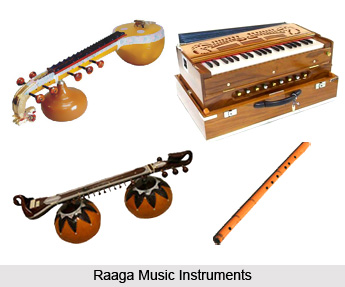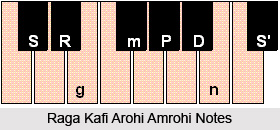 Classification of Raagas in Carnatic music is according to the scale type. The system of Classification of Raagas used in Carnatic music is called the mela. It is worked out very thoroughly and seems to be more appropriate for the types of raagas for which it was developed. It is a most theoretical system that was devised as a means of organizing all raagas that could exist, whether or not they already did. More appropriate for the types of raagas for which it was developed. The South Indian melodic system on the whole tends to generalize raagas in the direction of scales.
Classification of Raagas in Carnatic music is according to the scale type. The system of Classification of Raagas used in Carnatic music is called the mela. It is worked out very thoroughly and seems to be more appropriate for the types of raagas for which it was developed. It is a most theoretical system that was devised as a means of organizing all raagas that could exist, whether or not they already did. More appropriate for the types of raagas for which it was developed. The South Indian melodic system on the whole tends to generalize raagas in the direction of scales.
The Carnatic system consists of 72 mela raagas (scale types), 36 with Mall and 36 with Mai. Each of the 72 mela raagas contains the seven basic pitches (Sa, Ri, Ga, Ma, Pa, Dha, and Ni) in some form. The system is structured so that each variety of each pitch is combined with each variety of each of the other pitches. The idea is to classify all the combinations that could occur in a raaga rather than only those combinations that do occur in currently used raagas. The mela raagas are grouped into twelve subdivisions (chakras), each comprising six melas. Chakras I through VI are named Indu, Netra, Agni, Veda, Bana, and Rutu. They include melakarta raagas 1 through 36, each of which includes Sa, Shuddha Ma (Mall), Pa, and some form of Ri, Ga, Dha, and Ni. Chakras VII through XII, on the right-hand side of the chart, are named Rishi, Vasu, Brahma, Disi, Rudra, and Aditya. They include melakarta raagas 37 through 72, each of which includes Sa, Prati Ma (Matt), Pa, and some form of Ri, Ga, Dha, and Ni.Within each chakra, the pitches of the lower tetrachord remain constant; differences appear only in the upper tetrachord.
 The scales in the melakarta raaga system are not actual raagas, just as the Hindustani thats are not raagas; they are scale types. They are also called janaka raagas, or raagas that generate other raagas. There are, however, ragas with the same name as the names of melas; these are also referred to as melakarta ragas. Other raagas, called janya (or "generated") raagas, are grouped with the melakarta raagas. These are raagas that omit one or more of the seven pitches, feature melodic curves (which makes them vakra raagas), or have their compass delineated.
The scales in the melakarta raaga system are not actual raagas, just as the Hindustani thats are not raagas; they are scale types. They are also called janaka raagas, or raagas that generate other raagas. There are, however, ragas with the same name as the names of melas; these are also referred to as melakarta ragas. Other raagas, called janya (or "generated") raagas, are grouped with the melakarta raagas. These are raagas that omit one or more of the seven pitches, feature melodic curves (which makes them vakra raagas), or have their compass delineated.
It is difficult to designate which mela a janya raaga belongs with when one or two of its notes are omitted in ascent and descent. Some of the melakarta raagas have quite a number of janya raagas associated with them, but others have few.
Constant reference is made to the melakarta scheme, but people do not carry a copy of the chart with them. For this reason, it was deemed necessary to find an efficient way for a person to determine the form of a given melakarta raga without knowing the names of all the melakarta raagas and the form of each. Consequently, the method was adopted of numbering the ragas from 1 to 72 and coordinating these numbers with the initial syllables of the melakarta name. If we know the number of the melakarta raaga whose form we wish to determine, we then know immediately whether suddha or prati Ma is used. Then, by knowing which melakarta numbers fall into which chakras, we can pinpoint the chakra to which our raaga belongs. This accomplished, we need know only the characteristics of that chakra and the pattern of change within it in order to determine the form of the raaga.
The elaborate systemization involved in raga classification in the Carnatic tradition would seem to arise at least partially from a love of classifying. This is not an intellectual pleasure shared by many scholars (not to mention performers) of Hindustani music. However, this classification scheme receives unkind words even from some Carnatic musicians, who feel that it has restricted the whole sphere of melody. Theory does seem to have influenced the practice of music in this case. When the author of this system of 72 melakarta ragas, Venkatamakhi, first advocated it in his treatise Caturdandiprakashika (1666), he stated that only 19 of the 72 scale types were current at that time. He classified the remaining 53 as "in the process of making" and "to be made hereafter." It took a while for the system to become widespread, but finally it became such a "musical presence" that composers wrote specifically for even the originally theoretical mela raagas. A few composers - Kotisvara Ayer (1869-1938), for example- even wrote in each of the 72 melas.




















